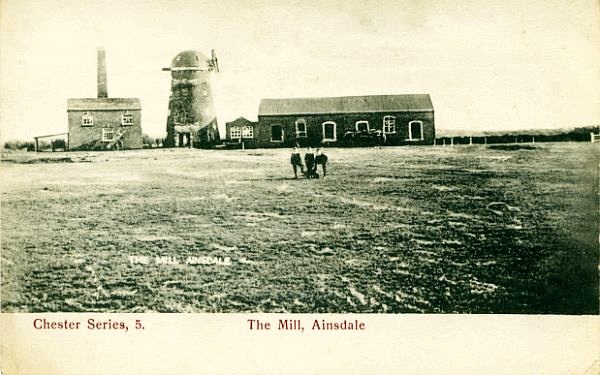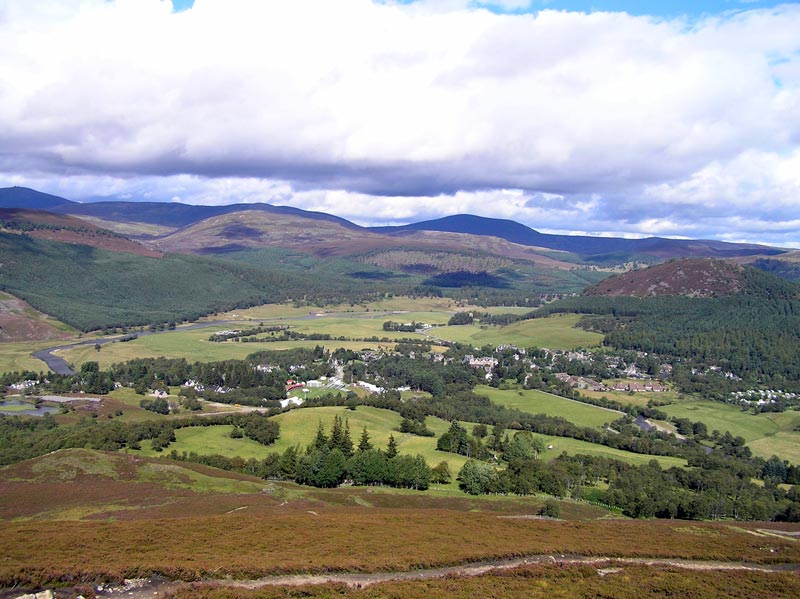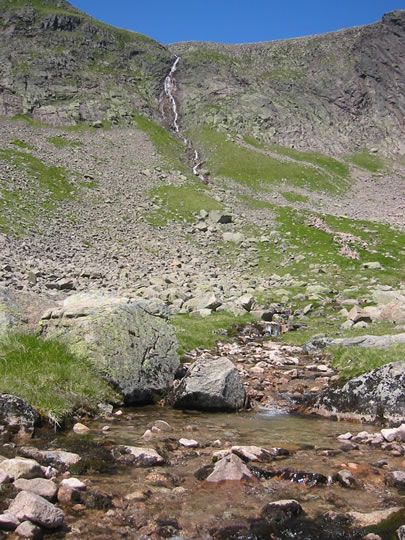|
John Menlove Edwards
John Menlove Edwards was born at Ainsdale, near Liverpool, England, on 18 June 1910, the son of a politically radical vicar, George Zachery Edwards, and his wife Helen. His father's cousin was Hewlett Johnson, Dean of Canterbury Cathedral. John Menlove's sister Nowell Mary was known as Nowell Mary Hewlett Johnson, after becoming Hewlett Johnson's second wife. John Menlove attended Fettes College, trained as a doctor at Liverpool University to be near his family home and assist with the care of his ailing father, and went on to qualify as a psychiatrist, afterwards setting up in private practise on Rodney Street, Liverpool. During the Second World War he was a conscientious objector, and worked as a child psychiatrist in London, at Great Ormond Street Children's Hospital and the Tavistock Institute. Edwards was homosexual and was for many years involved in a relationship with climber Wilfrid Noyce, whom he met in 1935. Edwards saved Noyce's life after an accident on Scafell Crag ... [...More Info...] [...Related Items...] OR: [Wikipedia] [Google] [Baidu] |
Ainsdale
Ainsdale is an area of Southport in Merseyside, England, situated three miles south of the centre of Southport. Originally in the Historic County of Lancashire, at the 2001 Census it had a population of 12,723. By the time of the 2011 census, only figures for Ainsdale (ward) were available. It makes up the southern edge of the town, separated from neighbouring Formby by RAF Woodvale. The village and roads leading to the beach are middle class areas, with some new modern developments around the station, including the addition of the private estate Village Row in 2006, and the Belway estate in 2013. History Prior to 1600 Ainsdale was listed in the ''Domesday Book'' as ''Einulvesdel''. Deriving from Old Norse name ''Einulfsdalr'', this apparently was the valley occupied by a Scandinavian by the name of Einulf. 1600-Present Ainsdale formed part of Sir Cuthbert Halsall of Halsall's estates during the early part of the 1600s. After financial difficulties the land containing Ainsdale ... [...More Info...] [...Related Items...] OR: [Wikipedia] [Google] [Baidu] |
Suicide
Suicide is the act of intentionally causing one's own death. Mental disorders (including depression, bipolar disorder, schizophrenia, personality disorders, anxiety disorders), physical disorders (such as chronic fatigue syndrome), and substance abuse (including alcoholism and the use of and withdrawal from benzodiazepines) are risk factors. Some suicides are impulsive acts due to stress (such as from financial or academic difficulties), relationship problems (such as breakups or divorces), or harassment and bullying. Those who have previously attempted suicide are at a higher risk for future attempts. Effective suicide prevention efforts include limiting access to methods of suicide such as firearms, drugs, and poisons; treating mental disorders and substance abuse; careful media reporting about suicide; and improving economic conditions. Although crisis hotlines are common resources, their effectiveness has not been well studied. The most commonly adopted metho ... [...More Info...] [...Related Items...] OR: [Wikipedia] [Google] [Baidu] |
Llanberis Pass
The Llanberis Pass ( cy, Bwlch Llanberis; alternative English name, Pass of Llanberis) in Snowdonia carries the main road ( A4086) from the south-east to Llanberis, over Pen-y-Pass, between the mountain ranges of the Glyderau and the Snowdon massif. At the bottom of the pass is the small village of Nant Peris. Geography The Llanberis Pass lies between the mountain massifs of Snowdon and the Glyderau in the county of Gwynedd, in northwestern Wales. The summit of the pass is above sea level, and is the site of the Pen-y-Pass Hotel, now a Youth Hostel. The A4086 road traverses the pass. The Nant Peris valley lies to the northwest descending to the town of Llanberis, the Llyn Peris and Llyn Padarn lakes and continues on as the Afon Rhythallt to Caernarfon and the Menai Strait. The valley is narrow, straight and steep-sided, with rocky crags and boulders on either side of the road. About one mile to the east of Pen-y-Pass is the Pen-y-Gwryd Hotel. To the east of this are the h ... [...More Info...] [...Related Items...] OR: [Wikipedia] [Google] [Baidu] |
Snowdonia
Snowdonia or Eryri (), is a mountainous region in northwestern Wales and a national park of in area. It was the first to be designated of the three national parks in Wales, in 1951. Name and extent It was a commonly held belief that the name is derived from ("eagle"), and thus means "the abode/land of eagles", but recent evidence is that it means ''highlands'', and is related to the Latin (to rise) as leading Welsh scholar Sir proved. The term first appeared in a manuscript in the 9th-century , in an account of the downfall of the semi-legendary 5th-century king (Vortigern). In the Middle Ages, the title ''Prince of Wales and Lord of Snowdonia'' () was used by ; his grandfather used the title ''Prince of north Wales and Lord of Snowdonia.'' The name ''Snowdonia'' derives from '' Snowdon'', the highest mountain in the area and the highest mountain in Wales at . Before the boundaries of the national park were designated, "Snowdonia" was generally used to refer to a sm ... [...More Info...] [...Related Items...] OR: [Wikipedia] [Google] [Baidu] |
Anaconda
Anacondas or water boas are a group of large snakes of the genus ''Eunectes''. They are found in tropical South America. Four species are currently recognized. Description Although the name applies to a group of snakes, it is often used to refer only to one species, in particular, the common or green anaconda (''Eunectes murinus''), which is the largest snake in the world by weight, and the second longest after the reticulated python. Etymology The South American names ''anacauchoa'' and ''anacaona'' were suggested in an account by Peter Martyr d'Anghiera, but the idea of a South American origin was questioned by Henry Walter Bates who, in his travels in South America, failed to find any similar name in use. The word anaconda is derived from the name of a snake from Ceylon (Sri Lanka) that John Ray described in Latin in his ' (1693) as '. Ray used a catalogue of snakes from the Leyden museum supplied by Dr. Tancred Robinson, but the description of its habit was based on Andr ... [...More Info...] [...Related Items...] OR: [Wikipedia] [Google] [Baidu] |
Geoffrey Winthrop Young
Geoffrey Winthrop Young (25 October 1876 – 8 September 1958) was a British climber, poet and educator, and author of several notable books on mountaineering. Young was born in Kensington, the middle son of Sir George Young, 3rd Baronet (see Young Baronets), a noted classicist and charity commissioner, of Formosa Place at Cookham in Berkshire, where he grew up. His mother, formerly Alice Eacy Kennedy, was the daughter of Dr Evory Kennedy of Belgard Co. Dublin and had previously lived in India as Lady Lawrence, wife of Sir Alexander Lawrence, Bt, nephew to the Viceroy, Lord Lawrence. Widowed when Sir Alexander died in a bridge collapse, Alice returned to England, marrying Sir George in 1871. Winthrop's brother Edward Hilton Young became the 1st Baron Kennet. His son Jocelin Winthrop Young was a Royal Navy officer and educator who founded the Round Square association of schools and was private tutor to Constantine II of Greece. Mountaineering Educated at Marlborough, Young began ... [...More Info...] [...Related Items...] OR: [Wikipedia] [Google] [Baidu] |
Tryfan
Tryfan ) is a mountain in the Ogwen Valley, Snowdonia, Wales. It forms part of the Glyderau group, and is one of the most recognisable peaks in Britain, having a classic pointed shape with rugged crags. At above sea level, it is the fifteenth-highest mountain in Wales. Tryfan was voted Britain's favourite mountain by ''Trail'' magazine. Between the mid-1980s and June 2010, its accepted height was . However, it was resurveyed using accurate GPS measurements and found to be 2.4 metres (eight feet) higher (which the pre-1980s surveys also recorded). Tryfan is said to be the final resting-place of Sir Bedivere (Bedwyr) of Arthurian legend. Naming The name "Tryfan" is thought to derive from the intensifying particle ''try–'' and the noun ''ban'' (‘top, peak’), giving the meaning ‘very high peak’. Routes of ascent There are many routes of ascent, ranging from easy ridge scrambling, to multi-pitch mountaineering rock climbs on the east face. A popular ascent route is i ... [...More Info...] [...Related Items...] OR: [Wikipedia] [Google] [Baidu] |
Lliwedd
Y Lliwedd is a mountain, connected to Snowdon in the Snowdonia National Park, North Wales. Its summit lies above sea level. The eastern flanks are steep cliffs rising above Glaslyn and Llyn Llydaw. Y Lliwedd is the most conspicuous of the peaks for those who approach Snowdon via the Miners' and Pyg tracks. Few that summit Snowdon continue over to Y Lliwedd as the challenge of Wales' highest peak is enough, leaving Y Lliwedd quiet and peaceful even when queues are forming at the summit of Snowdon. Hikers and mountaineers often pass over Y Lliwedd when walking the Snowdon Horseshoe. The noted British climber George Mallory undertook many of his early climbs here. It was also the site of considerable training activity for the 1953 British Everest Expedition. The north face of Y Lliwedd was explored in the late 19th century and in 1909 was the subject of the first British climbing guide, ''The Climbs on Lliwedd'' by J. M. A. Thomson and A. W. Andrews. Two subsidiary pea ... [...More Info...] [...Related Items...] OR: [Wikipedia] [Google] [Baidu] |
Minch
The Minch ( gd, An Cuan Sgitheanach, ', ', '), also called North Minch, is a strait in north-west Scotland, separating the north-west Highlands and the northern Inner Hebrides from Lewis and Harris in the Outer Hebrides. It was known as ("Scotland's fjord/firth") in Old Norse. The Lower Minch (), also known as the Little Minch, is the Minch's southern extension, separating Skye from the lower Outer Hebrides: North Uist, Benbecula, South Uist, Barra etc. It opens into the Sea of the Hebrides. The Little Minch is the northern limit of the Sea of the Hebrides. Geography The Minch and Lower Minch form part of the Inner Seas off the West Coast of Scotland, as defined by the International Hydrographic Organization. The Minch ranges from wide and is approximately long. It is believed to be the site of the biggest meteorite ever to hit the British Isles. The Lower Minch is about wide. In June 2010 Eilidh Macdonald became the first person to swim across it from Waternish Poin ... [...More Info...] [...Related Items...] OR: [Wikipedia] [Google] [Baidu] |
Braemar
Braemar is a village in Aberdeenshire, Scotland, around west of Aberdeen in the Highlands. It is the closest significantly-sized settlement to the upper course of the River Dee sitting at an elevation of . The Gaelic ''Bràigh Mhàrr'' properly refers to the area of upper Marr (as it literally means), i.e. the area of Marr to the west of Aboyne, the village itself being Castleton of Braemar (''Baile a' Chaisteil''). The village used to be known as ''Cinn Drochaid'' (bridge end); ''Baile a' Chaisteil'' referred to only the part of the village on the east bank of the river, the part on the west bank being known as ''Ach an Droighinn'' (thorn field). Geography Braemar is approached from the South on the A93 from Glen Clunie and the Cairnwell Pass and from the East also on the A93 from Deeside. Braemar can be approached on foot from the West through Glen Tilt, Glen Feshie, Glen Dee (by the Lairig Ghru), and Glen Derry (by the Lairig an Laoigh). Braemar is within a one-and-a-hal ... [...More Info...] [...Related Items...] OR: [Wikipedia] [Google] [Baidu] |
Linn Of Dee
The River Dee ( gd, Uisge Dhè) is a river in Aberdeenshire, Scotland. It rises in the Cairngorms and flows through southern Aberdeenshire to reach the North Sea at Aberdeen. The area it passes through is known as Deeside, or Royal Deeside in the region between Braemar and Banchory because Queen Victoria came for a visit there in 1848 and greatly enjoyed herself. She and her husband, Prince Albert, built Balmoral Castle there which replaced an older castle. Deeside is a popular area for tourists, due to the combination of scenic beauty and historic and royal associations. It is part of the Cairngorms National Park, and the Deeside and Lochnagar National Scenic Area. The Dee is popular with anglers and is one of the most famous salmon fishing rivers in the world. The New Statistical Account of Scotland attributed the name Dee as having been used as early as the second century AD in the work of the Alexandrian geographer Claudius Ptolemy, as ''Δηοῦα'' (=Deva), meanin ... [...More Info...] [...Related Items...] OR: [Wikipedia] [Google] [Baidu] |
North Wales
, area_land_km2 = 6,172 , postal_code_type = Postcode , postal_code = LL, CH, SY , image_map1 = Wales North Wales locator map.svg , map_caption1 = Six principal areas of Wales commonly defined to be North Wales, for policing, fire and rescue, health and regional economy. North Wales ( cy, Gogledd Cymru) is a region of Wales, encompassing its northernmost areas. It borders Mid Wales to the south, England to the east, and the Irish Sea to the north and west. The area is highly mountainous and rural, with Snowdonia National Park ( and the Clwydian Range and Dee Valley (), known for its mountains, waterfalls and trails, wholly within the region. Its population is concentrated in the north-east and northern coastal areas, with significant Welsh-speaking populations in its western and rural areas. North Wales is imprecisely defined, lacking any exact definition or administrative structure. It is commonly defined adminis ... [...More Info...] [...Related Items...] OR: [Wikipedia] [Google] [Baidu] |

.jpg)






